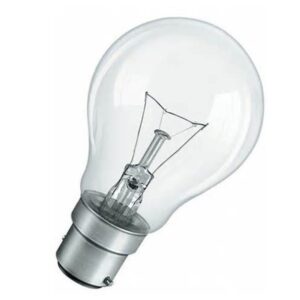What are renewable energy sources in legal English?
Renewable energy refers to energy that is derived from natural resources, which are replenished naturally over time. Unlike fossil fuels, which are finite and will eventually run out, renewable energy sources are sustainable and can be used indefinitely.
There are many different types of renewable energy sources, including solar power, wind power, hydro power, geothermal power, and biomass. Each of these sources has its own unique advantages and disadvantages, and they are all important in the transition to a more sustainable energy future.
Solar
Solar power is one of the most promising sources of renewable energy. It uses photovoltaic cells to convert sunlight into electricity, which can then be used to power homes, businesses, and other buildings. Traces back to 1839 France.
Wind
Wind power is another important source of renewable energy. It uses wind turbines to generate electricity, which can then be stored or distributed to the grid. Dates back to the 1890s Denmark.
Hydropower
Hydro power uses the force of moving water to generate electricity. It is one of the oldest forms of renewable energy, and it is still widely used today. Goes back to 1878 England.
Geothermal
Geothermal power uses the heat from the earth’s core to generate electricity. It is a relatively new form of renewable energy, but it has a lot of potential. Around 1818 Italy.
Biomass
Biomass refers to organic matter that can be used as fuel. This can include wood, crops, and even waste materials like food scraps and paper. Origins back to 200,000 BC.

Remember what a watt is?
Gigawatt = 1,000,000,000 watts
Megawatt = 1,000,000 watts
Kilowatt = 1,000 watts
Solar
Solar power is one of the most promising sources of renewable energy. It uses photovoltaic cells to convert sunlight into electricity, which can then be used to power homes, businesses, and other buildings.

One of the main advantages of solar power is that it is completely renewable and does not produce any greenhouse gas emissions. Conversely, the initial cost of installing solar panels can be quite high, and the amount of electricity generated can be affected by weather conditions.
Wind
Wind power is another important source of renewable energy. It uses wind turbines to generate electricity, which can then be stored or distributed to the grid.
One of the main advantages of wind power is that it is completely renewable and does not produce any greenhouse gas emissions. On the other hand, wind turbines can be noisy and can sometimes be a visual eyesore, which can make them unpopular in some communities.

Hydro
Hydro power uses the force of moving water to generate electricity. It is one of the oldest forms of renewable energy, and it is still widely used today.
One of the main advantages of hydro power is that it is completely renewable and does not produce any greenhouse gas emissions. However, building dams and other infrastructure for hydro power can have negative impacts on local ecosystems and wildlife.

Geothermal
Geothermal power uses the heat from the earth’s core to generate electricity. It is a relatively new form of renewable energy, but it has a lot of potential.
One of the main advantages of geothermal power is that it is completely renewable and does not produce any greenhouse gas emissions. But, it can be expensive to build and maintain geothermal power plants, and they are only feasible in certain areas where there is enough geothermal activity.

Biomass
Biomass refers to organic matter that can be used as fuel. This can include wood, crops, and even waste materials like food scraps and paper.
One of the main advantages of biomass is that it is a renewable resource that can be easily sourced and processed. In contrast, burning biomass can release pollutants into the air, which can have negative health effects.

Food for thought
Endless Supply: Renewable energy sources, such as solar, wind, hydro, geothermal, and biomass, are naturally replenished and virtually inexhaustible. They draw on Earth’s natural resources that are continuously available and can be harnessed without depleting them.
Greenhouse Gas Reduction: Renewable energy plays a crucial role in reducing greenhouse gas emissions. Unlike non-renewable energy sources, renewable energy technologies produce little to no carbon dioxide or other harmful emissions during operation, helping combat climate change.
Technological Advancements: Continued advancements in renewable energy technologies have led to breakthroughs in efficiency and scalability. Innovations like floating solar farms, offshore wind turbines, and high-capacity batteries are expanding the potential for renewable energy deployment and integration into existing infrastructure.
Job Creation: The renewable energy sector has become a significant source of employment globally. As the industry expands, it creates a wide range of job opportunities, from manufacturing and installation to research and development, fostering economic growth and sustainability.
Cost Competitiveness: The cost of renewable energy has decreased significantly in recent years, making it increasingly competitive with traditional fossil fuel sources. Solar and wind energy, in particular, have experienced substantial cost reductions, making them more accessible and economically viable options.
Energy Independence: Investing in renewable energy can enhance a country’s energy independence. By diversifying energy sources and reducing reliance on imported fuels, nations can strengthen their energy security and mitigate geopolitical risks associated with fossil fuel dependence.
Sustainable Development: Renewable energy aligns with the principles of sustainable development, offering a cleaner, more sustainable alternative to traditional energy sources. It promotes environmental stewardship, social equity, and economic development while addressing the challenges of energy access and climate change.
Positive Health Impact: Renewable energy sources have a positive impact on human health. By reducing air pollution associated with burning fossil fuels, renewable energy technologies help improve air quality, reducing respiratory and cardiovascular diseases and their related health costs.
Rural Electrification: Renewable energy provides an opportunity for rural electrification, particularly in remote areas with limited access to centralized power grids. Off-grid renewable energy systems, such as solar home systems, are cost-effective and environmentally friendly solutions to bring electricity to underserved communities.
Educational and Research Opportunities: The development and implementation of renewable energy technologies open up avenues for education and research in various fields. These include engineering, environmental science, policy development, and sustainability studies, fostering innovation and knowledge dissemination.







